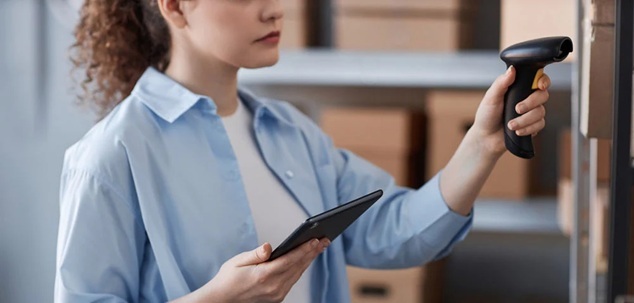Contents
Businesses run on precision and momentum. Whether you’re stocking shelves, tracking deliveries, or serving customers at the checkout, the right tools can make all the difference. Mobility and accuracy are especially valuable in these settings, which is why the Bluetooth scanner has become a trusted companion for many organisations. By cutting the cord, literally, it allows staff to move freely while capturing and sending data instantly.
The rise of wireless scanning technology reflects a broader shift in how companies manage everyday tasks. Staff no longer have to remain rooted to one spot, nor do they need to juggle tangled cables. Instead, the scanner travels with them across the shop floor, through a warehouse aisle, or out on a delivery run. This flexibility means less time wasted, smoother workflows, and greater confidence that information is being recorded accurately. It’s a small device with a big impact, quietly transforming the way businesses of all sizes handle their operations.
How Does a Bluetooth Barcode Scanner Work?

A portable Bluetooth barcode scanner is a handheld device that reads barcodes and transmits the information to a paired computer, smartphone, or tablet without using cables. Just scan the code, and the details appear on your screen.
Here’s how it works: barcodes, whether made up of lines or squares, hold information about an item. The scanner shines a light onto the code, which is reflected into a sensor. That signal is then converted into digital data and sent via Bluetooth to the receiving device. What once took time to type by hand is now completed in a fraction of a second.
The purpose is simple—streamline data entry. Scanners minimise errors, keep stock records accurate, and speed up customer transactions. Other benefits include:
- Freedom of movement: scan products or shelves without being tied to a workstation.
- Speed: instant recognition and transfer of information.
- Compatibility: connects with tablets, mobile phones, and point-of-sale systems.
- Convenience: compact, lightweight, and easy to carry.
- Dependability: designed to handle the daily demands of retail, logistics, and beyond.
In practice, Bluetooth barcode readers act as a bridge between physical items and digital systems, ensuring the flow of information is smooth and reliable.
Different Types of Bluetooth Scanners
Not all scanners look or behave the same. Depending on the task, you might prefer one type over another:
- Handheld Scanners: Classic, versatile, and comfortable to use. These are suitable for retail counters or general office inventory work.
- Pocket Scanners: Small enough to carry in your pocket, making them handy for mobile workers, event staff, or field sales.
- Presentation Scanners: Designed for busy tills, these stay fixed on a counter while staff pass items in front of them. Quick, efficient, and perfect for high-volume scanning.
- Wearable Scanners: Worn on the wrist, finger, or attached to gloves, these allow staff to pick, pack, and scan all at once. Warehouses and distribution centres find them especially useful.
Each type brings unique advantages, and the right choice depends on how and where the scanner will be used.
Key Features to Look Out For
Before making a decision, it helps to know which features matter most to your business. Here’s a breakdown:
- Range & Connectivity: Some scanners work best within a few metres of the device, while others can handle much greater distances. Warehouses often need that extended range.
- Battery Life: A full day’s work requires a battery that can keep up. Look for models with long runtimes or convenient charging docks.
- 1D vs 2D Capability: 1D codes are the traditional lines you see on most products, while 2D codes (like QR codes) carry more information. Choosing a scanner that handles both gives flexibility.
- Durability: Consider the environment. If your scanner will be used on shop counters, a standard model may be enough. If it’s destined for a warehouse, you’ll need something tougher—shockproof and dust-resistant models exist for exactly this reason.
- Speed and Accuracy: Faster scanners keep queues short and inventory checks accurate. Consider performance specs such as scan rate and error rate.
- Ease of Use: Devices that pair quickly and don’t require complex setup save time and frustration.
- Compatibility: Always confirm that the scanner works smoothly with your software and hardware. This ensures seamless integration into your existing systems.
When choosing, start with your use case. Retailers may value presentation scanners for speed at the till, while logistics teams often prioritise wearable or rugged handheld models. Match features to the environment, then weigh them against your budget.
Conclusion
Bluetooth scanning technology has reshaped the way businesses handle information. It reduces manual errors, speeds up workflows, and gives staff the freedom to move around while staying connected to essential systems. From handheld units for retail counters to wearables built for warehouses, there’s a model for almost every industry.
Investing in dependable Bluetooth barcode readers means improved productivity, smoother transactions, and more reliable data management. For organisations aiming to combine mobility with precision, these scanners offer a practical, forward-looking solution. Efficiency doesn’t need to be complicated; sometimes it really does fit neatly in the palm of your hand.

Comments are closed.